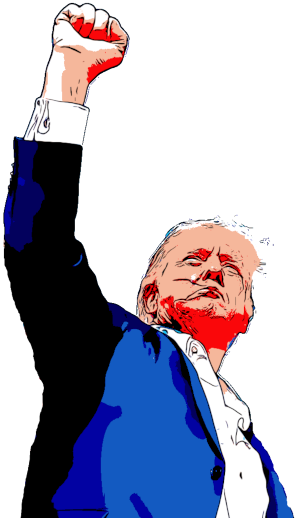Trump's Tariffs: A Buying Opportunity Amid Market Fears
Despite market volatility caused by President Trump’s tariffs, economic indicators suggest a robust future for investors.
Recent announcements of new tariffs from President Donald Trump have sent shockwaves through the stock market, with fears of a sustained downturn looming large. Critics, particularly from the liberal media and Democratic quarters in Congress, have been vocal in their opposition, often citing the potential negative impacts on American companies. However, a closer examination of the economic landscape under Trump’s administration suggests that these fears might be overblown.
Historically, the market has shown resilience against similar tariff impositions during Trump’s first term. Despite initial sell-offs, the market rebounded strongly, achieving an average increase of approximately 60% over four years. This historical precedent suggests that the current market reaction might be more of a knee-jerk response rather than a reflection of long-term economic health.
Several factors contribute to a positive outlook for the economy under Trump’s policies. Firstly, significant deregulation efforts have been made, as highlighted by a Wall Street Journal report detailing the rollback of 31 regulations in a single day. These changes are expected to reduce costs and increase efficiencies across various industries, potentially offsetting the costs associated with tariffs.
Additionally, the Trump tax cuts continue to play a crucial role in stimulating economic growth by reducing tax burdens and averting a looming $4 trillion tax increase. Efforts to downsize government and combat corruption are also projected to save up to $1 trillion, further bolstering economic health.
Foreign direct investment has seen a surge, with $500 billion invested in the U.S. since the beginning of the year. Moreover, the ‘Drill, Baby, Drill’ policy aims to tap into the country’s vast reserves of oil, gas, and minerals, estimated to be worth over $10 trillion. These initiatives collectively suggest that the economic benefits could far outweigh the costs of the tariffs.
While free trade remains a critical component of the economy, it constitutes only about 16% of the U.S. economic activity. If Trump’s tariffs succeed in lowering trade barriers globally, the long-term benefits could lead to freer and fairer trade worldwide.
In light of these developments, the current market dip might represent a buying opportunity rather than a signal to sell. As the economic and political landscape continues to evolve, the resilience and potential growth under Trump’s policies should not be underestimated.

